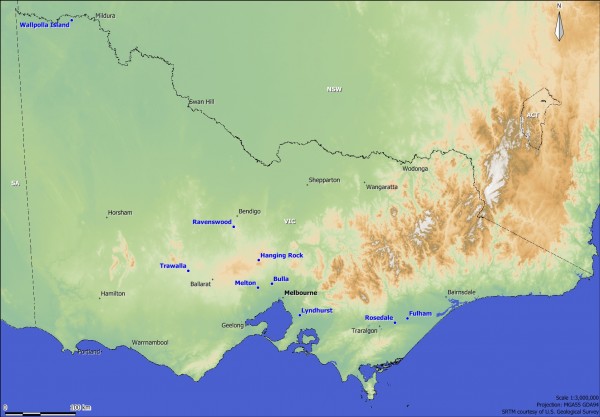An important aspect of investigating Aboriginal sites in Australia is the dating of cultural deposits using scientific techniques. Where well preserved contexts are excavated, there are often samples suitable for absolute dating. Organic material such as charcoal can be dated using radiocarbon analysis and the age of soil deposition can be analysed using thermoluminescence.
Several projects undertaken by VCA in recent years have obtained information on the date of Aboriginal cultural deposits. We have gathered more than 70 absolute dates from sites across Victoria. These supplement other lists such as the Radiocarbon Datasets hosted by the Australian Archaeological Association:

Trawalla (Western District): Investigations across the valley of Mount Emu Creek resulted in the collection of 18 radiocarbon dates and one TL date. These show that occupation of the valley spans more than 7000 years, but the majority of dates are from the last one thousand years, showing intensive occupation in the later Holocene.
Bulla (north of Melbourne): Excavation of alluvial deposits beside Deep Creek, a tributary of the Maribyrnong River, found lithic artefacts at up to (and beyond) 3 m depth. Two charcoal samples from 1 m depth returned dates of 12,130-11,405 cal BP. Deposits on a granitic spur above the valley also date from as early as 10,152 cal. BP.
Fulham (Gippsland): Nine radiocarbon dates from a sand deposit east of Sale fall into two phases. The earlier covers the period c. 13,000-10,500 cal BP; the later is from c. 3000-1900 cal BP. This shows that the site was occupied during two distinct periods, separated by up to 10,000 years.
Wallpolla Creek (northwest Victoria): Test excavations on alluvial terraces along Wallpolla Creek in the far northwest of the state resulted in the first age estimates for clay heat retainers in the region using thermoluminescence (TL) dating (3,780±107 ka). Radiocarbon age estimates were also obtained from a shell midden, revealing a cultural sequence extending back to the early Holocene (8,700-9,000 BP).
